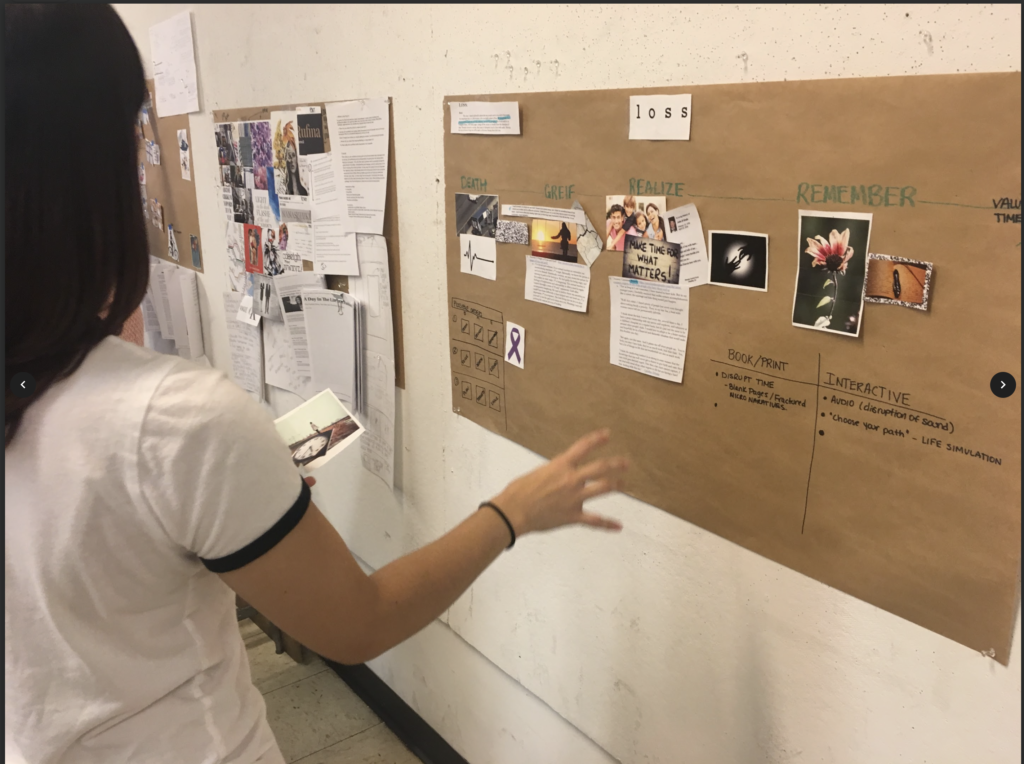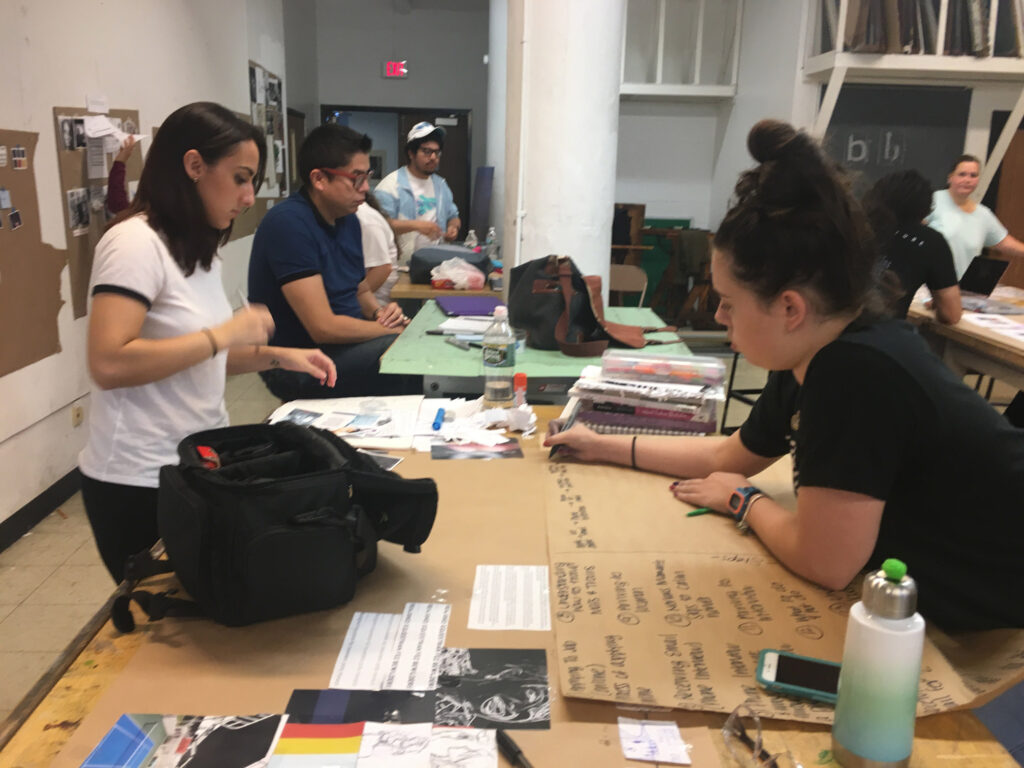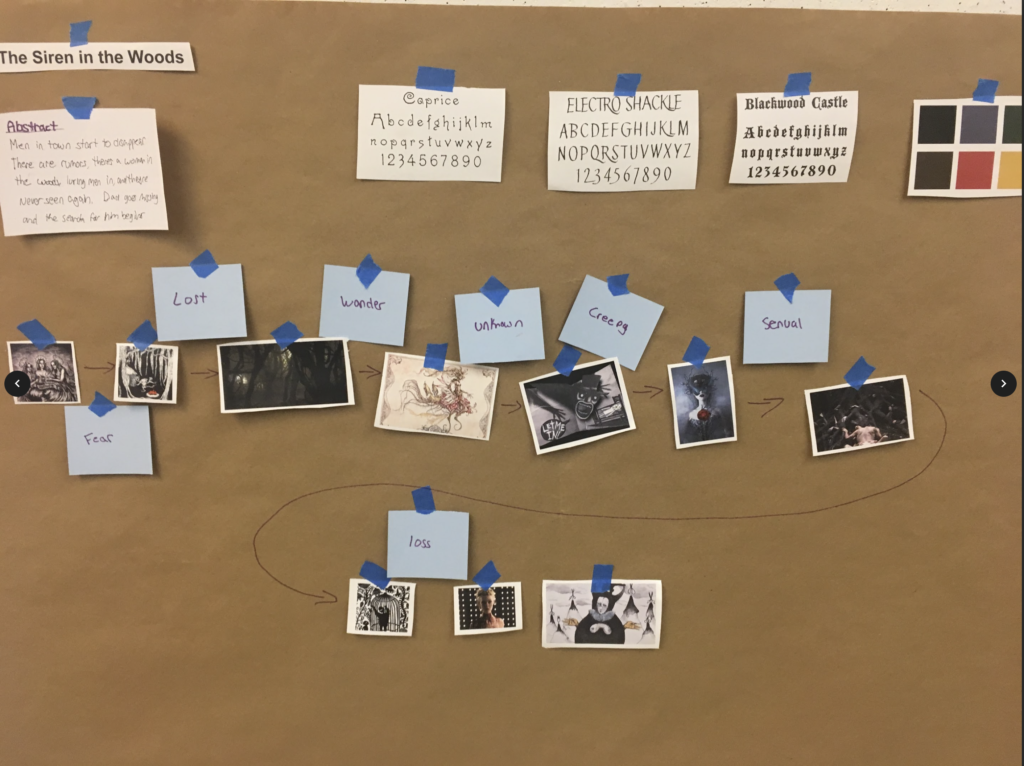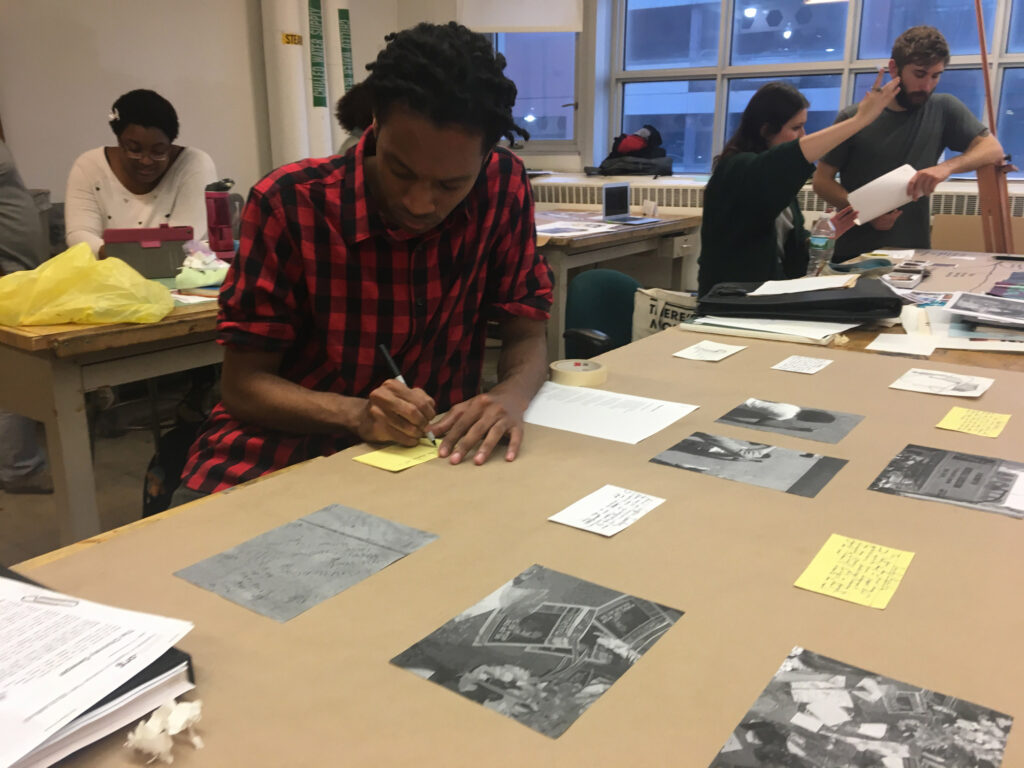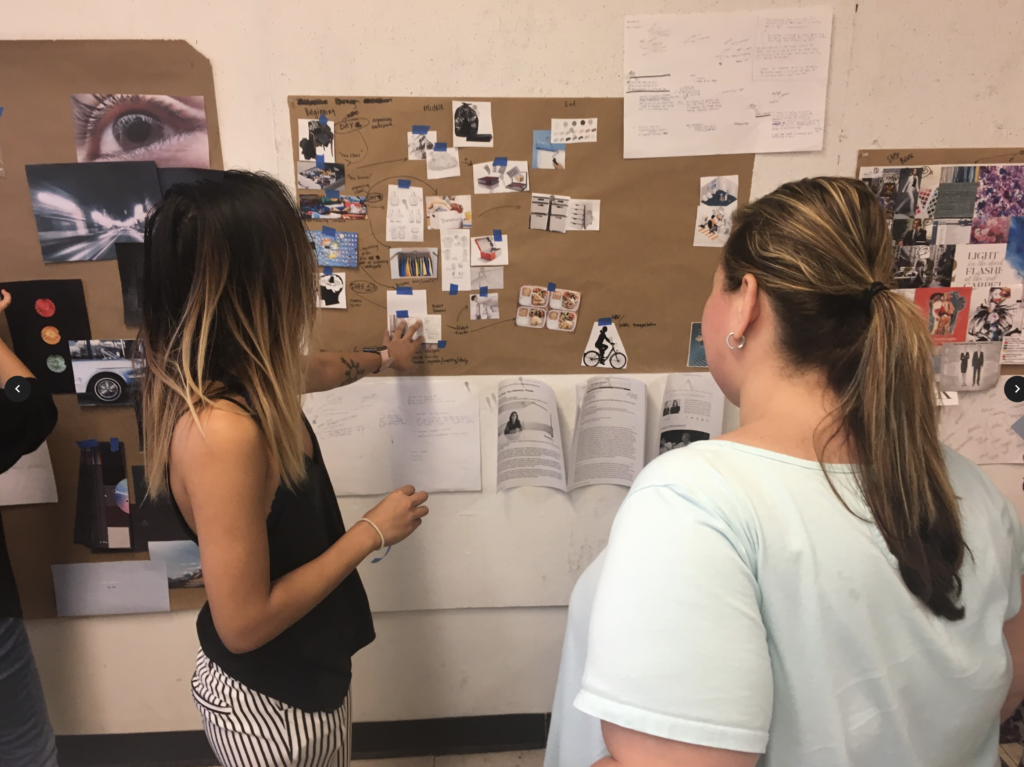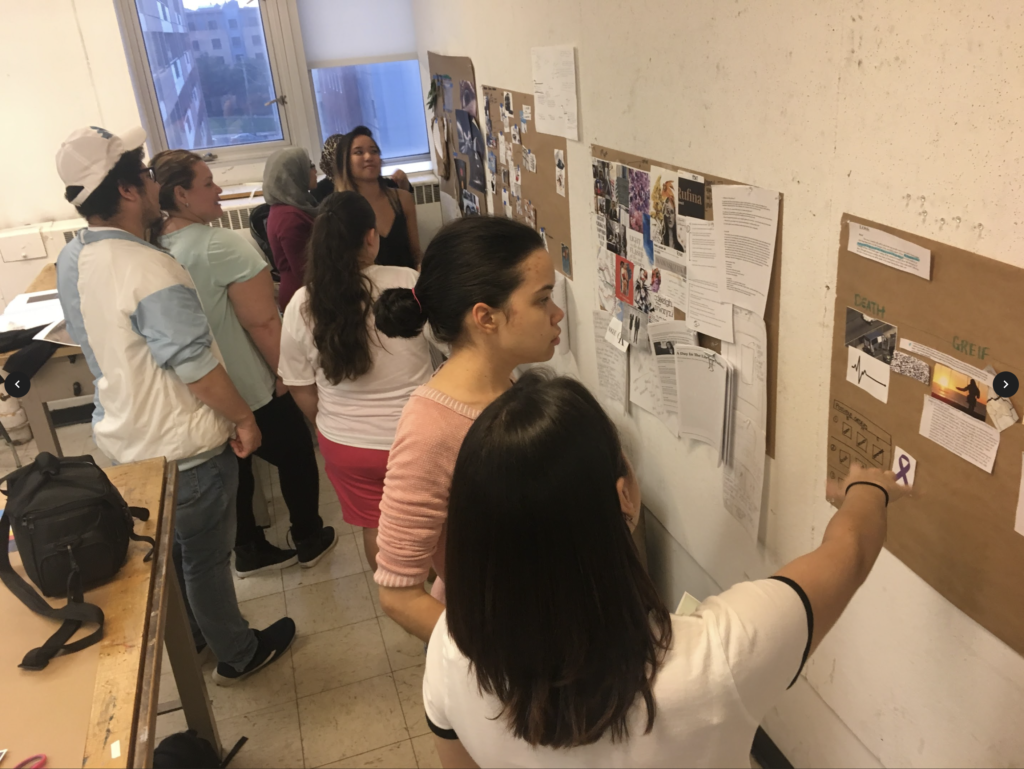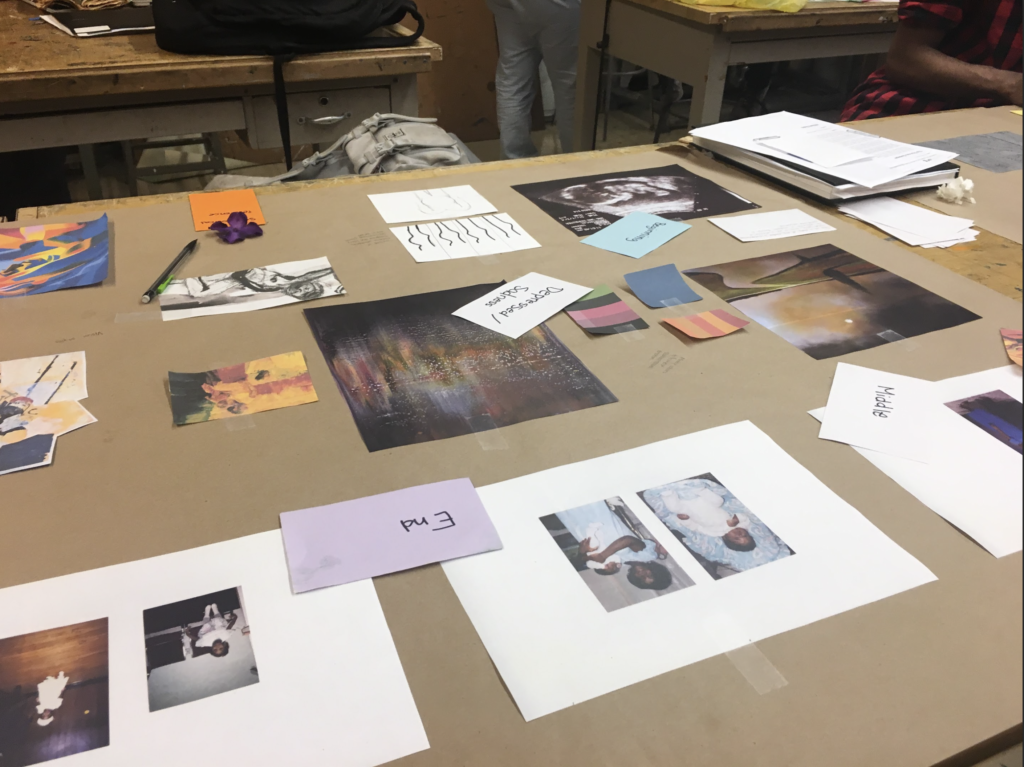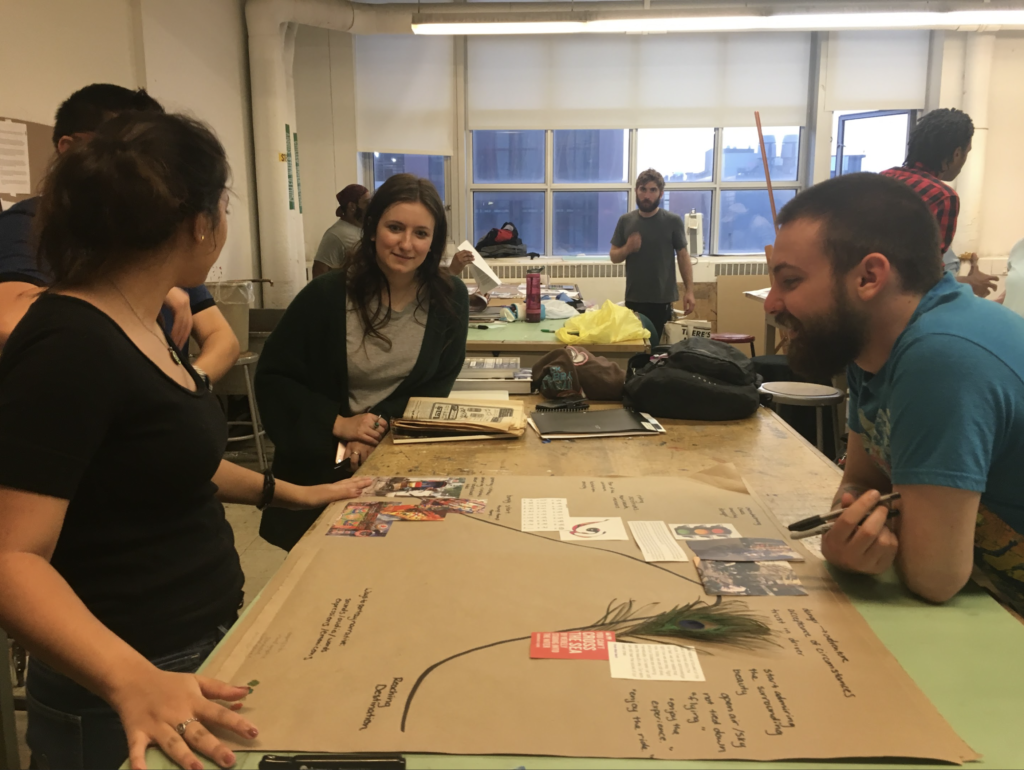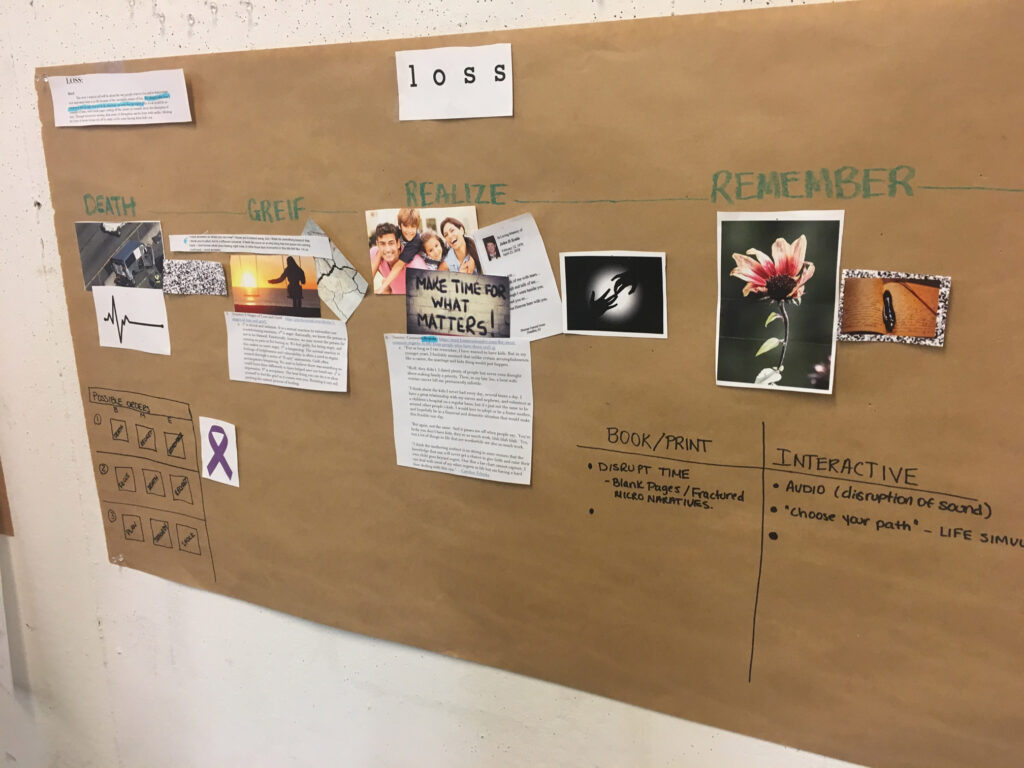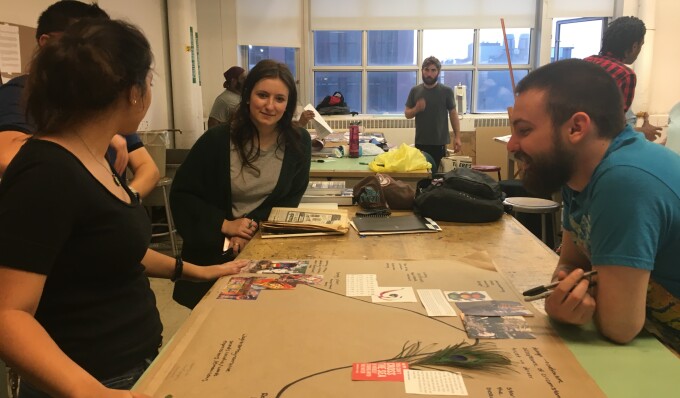Narrative Mapping
In order to determine the “story” you will choose for your Narrative project, map both of your possible story ideas (2) by visualizing their structure, and “building” your narrative concept for each.
Work large scale on brown craft paper approx. 18″ x 24.” In addition to all of your hard copy research (imagery and text content raw materials), you will need materials to work with in class such as scissors, x-acto, straight edge/ruler, tape/glue, post-its, pens, etc. etc.
*See some images below of past students’ narrative mapping to give you a feel for the process.
+ Map the narrative arc of each story
Think about the following:
Define the narrative arc of your story — what is it?
Does it have a conflict and resolution?
Is it linear? layered? or circuitous?
Do you want to intentionally change the narrative’s “shape” and/or order (i.e. tell the story backwards, etc)?
What kind of “shape” or structure does it have? Once you have created the main abstraction of your narrative, begin to break up and distribute your text/elements across it. What are the important passages? Moving moments? Indicate particular points of importance, such as shifts in tone, ideas for images from your narrative image list, as well as their form (i.e. photographic, drawn, diagrammatic, etc.) You can use post-its if you want to be able to have different things to move around and try in different locations.
+ Build the story
Add your research and raw materials (content, etc.) that you have been finding and aggregating ONTO the narrative arc that you have drawn where appropriate. These should include:
1. Imagery (photographs, drawings, diagrams, charts, maps, textures, colors, etc). Pull from your visual research.
2. Textual content (could come from a text source, or be derived for transcriptions of audio interviews, surveys, contextual copy or other language found in things like artifacts such as signs, conversations, letters, menu’s, instructions, etc.)
+ Define Audience & Goals
1. Who is your target audience? (This should not be “everyone” or “general public,” etc.) Who are you trying to communicate with? This choice will be very useful in helping you develop your design concept.
2. What is the goal of your piece?
What do you want people to understand / know / feel / do after experience your designs?
*Since you are creating two distinctly different interpretations of your story (each utilizing a different medium), you may want to decide if each medium / story interpretation is targeting the same audience, or a different audience.
+ Mediums – further consider & define
Now that you have mapped your stories, reconsider the two mediums for each story that you had identified earlier. Answer these questions:
1. Are the two mediums chosen different enough from one another?
2. Why have you chosen each medium?
3. Be prepared to briefly explain your rationale for both mediums, answering these questions:
– What are the affordances of the medium that you plan to utilize for your interpretation? (*Think about HOW each medium creates a different kind of experience for your target audience.)
– How do your medium choices relate to your target audience(s)?
